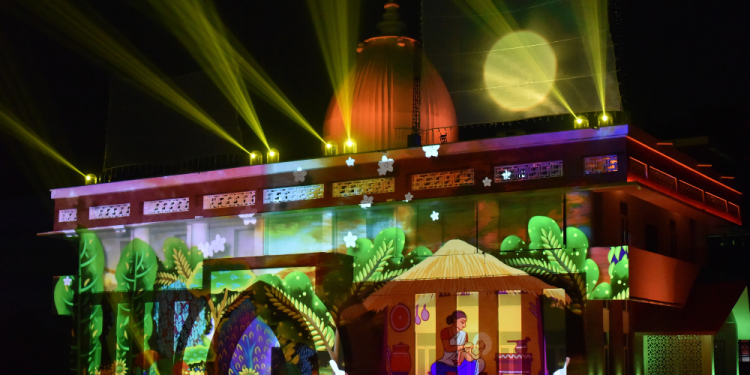The evening of 2nd of last month (October), when the façade of the historic Gandhi Mandap Memorial Complex on the Sarania hilltop in Guwahati was illuminated in full glow, accompanied by a vibing narrative of Brahmaputra, it did resonate its name- ‘Purva Prabha’ or ‘Ray of the East,’ to connote for popular connect.
The illumination, as it synced and shined with the narrative, it meant many a special thing- for the region, country, and industry. It was first of its kind in the Northeast; first such exploit in the country to celebrate Assam’s role in India’s Freedom Struggle; first holographic projection in Assam; and first holography projection using hydraulic-powered mesh.
Envisioned by the Government of Assam, Commissioned by Guwahati SmartCity Limited, structurally-conceived by Tata Consulting Engineers, and audio-visually integrated by Tricolor India Schauspiel, the latest holographic 3D projection in the year of Azaadi Ka Amrit Mahotsav, is truly a Ray of the East.
An SIA exclusive this month.
………………………………………………..
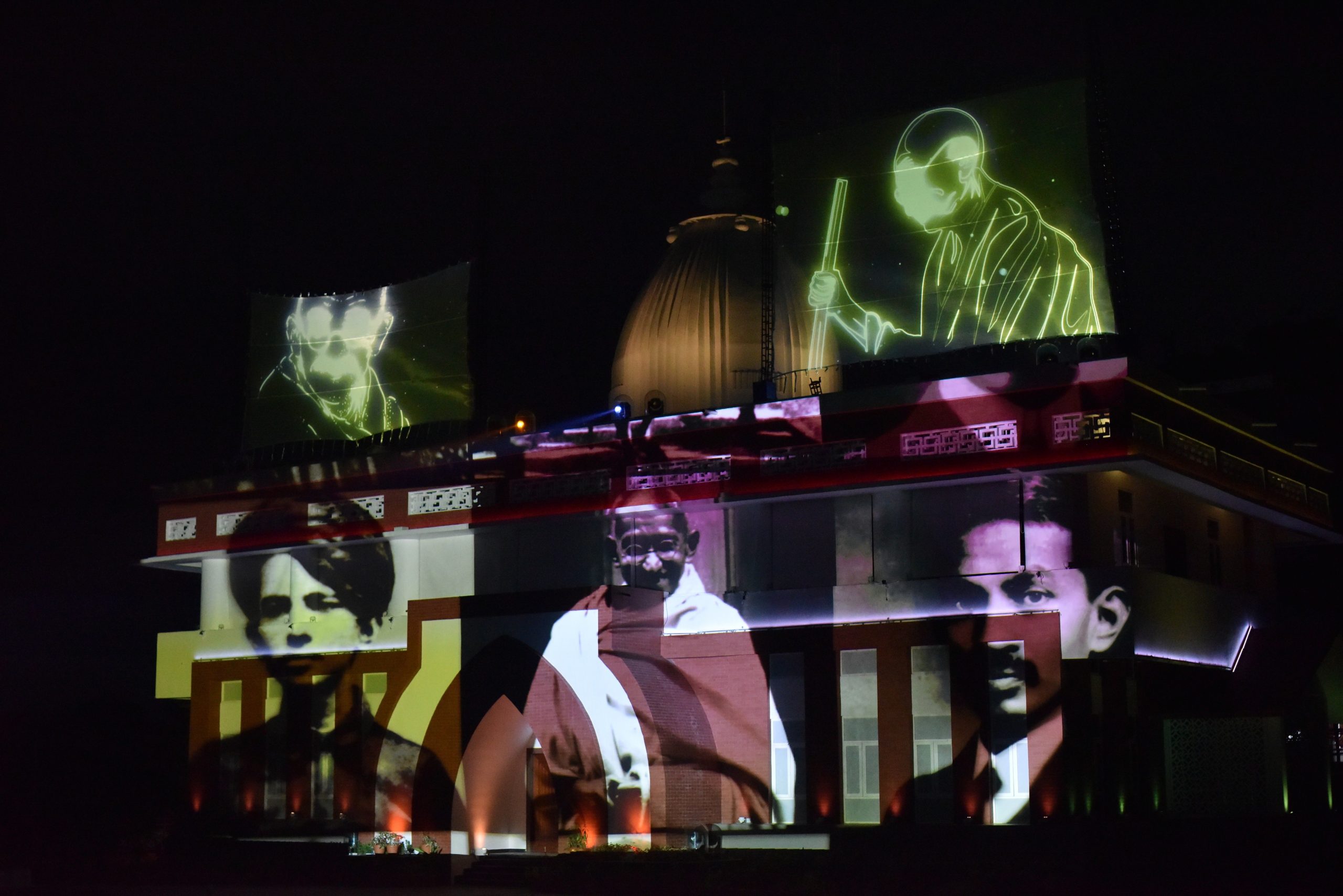 The holographic 3D projection on the façade of the Gandhi Mandap Memorial Complex (museum) is a truly unique proposition for reasons more than one. The region, timing, thinking, setting, execution, and even the naming- every aspect of it holds that unique formulation factor.
The holographic 3D projection on the façade of the Gandhi Mandap Memorial Complex (museum) is a truly unique proposition for reasons more than one. The region, timing, thinking, setting, execution, and even the naming- every aspect of it holds that unique formulation factor.
While by the region’s sheer traditional antiquity, the city of Guwahati is called Pragjyotisha pura or city of eastern light, by the plain reckoning of solar movement, the city wakes up to one of the earliest sunrises in India.
According to Indian Puranic antiquity, Pragjyotishapura was the capital of demon king Narakasura whom Lord Krishna killed to free the people from the former’s oppression, and the day came to be celebrated as Deepawali or Festival of Lights.
The region had a very defining spiritual phase in the middle of 15th century when Shrimant Shankardev – most influential Assamese polymath ever – led a neo-monotheistic movement unifying and reforming people in several ways.
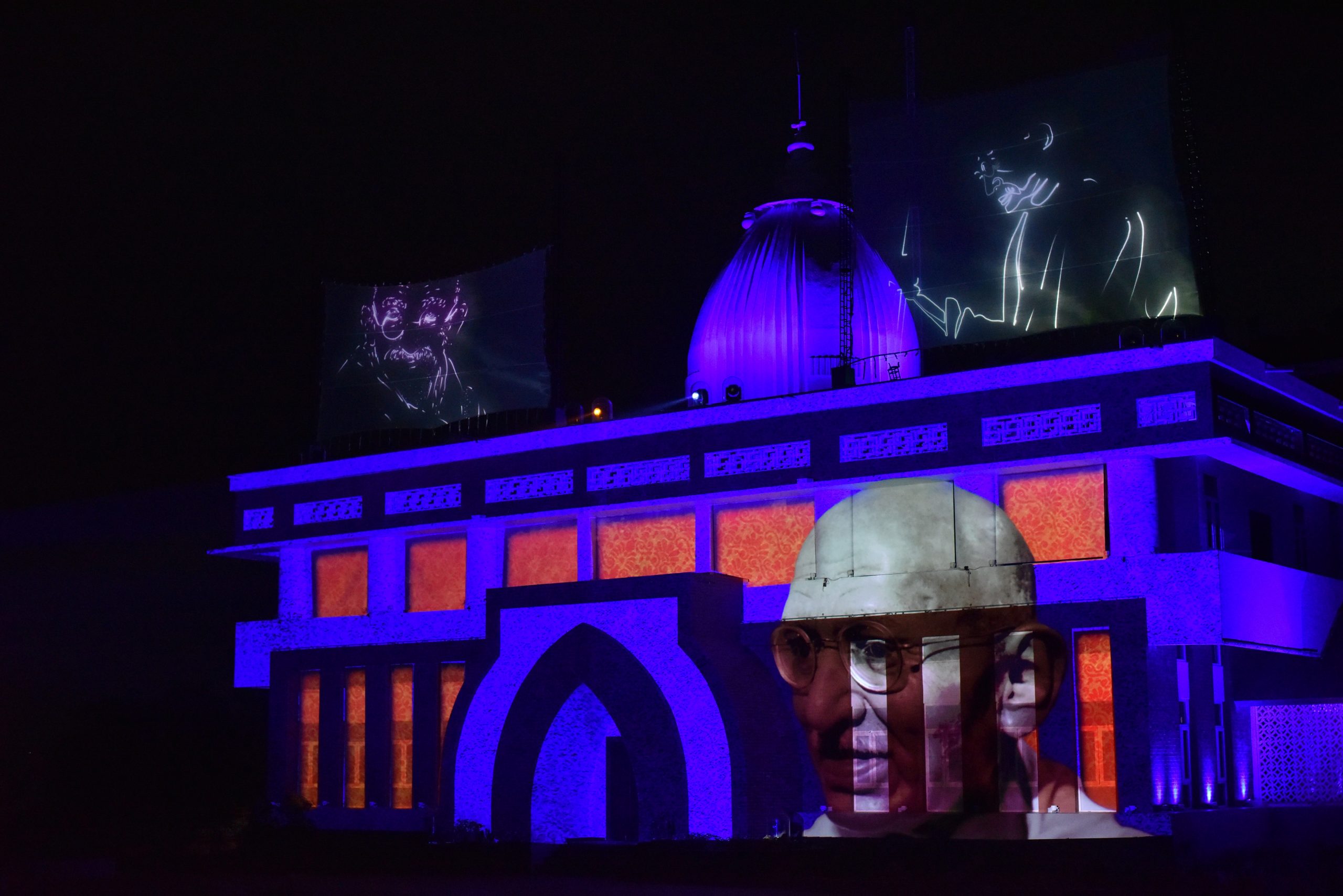
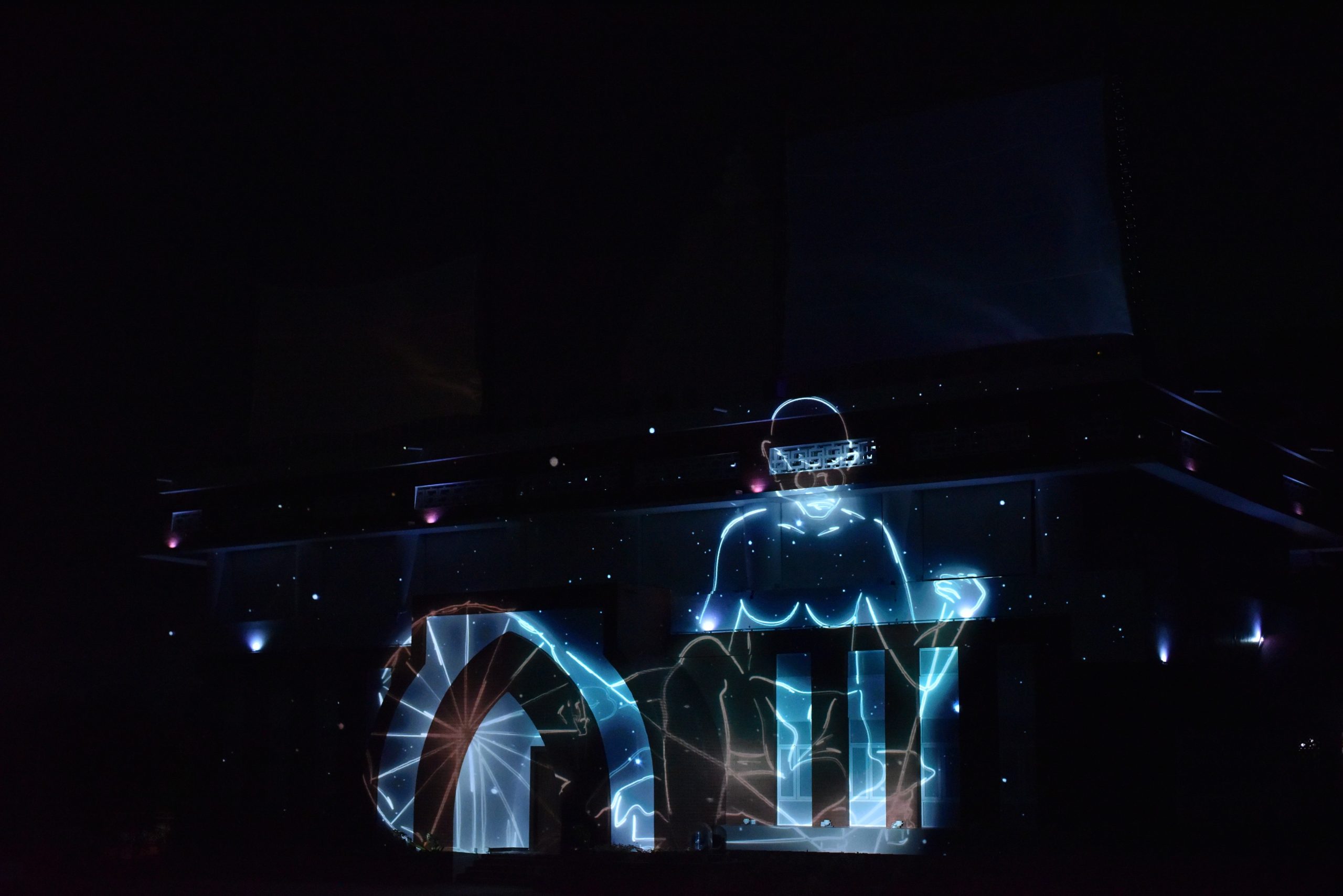 During the crucial phase of India’s Freedom Struggle in early-1920s, Mahatma Gandhi first walked up the Sarania Hill in 1921, and zit became an exhortation point for subsequent phases till his last visit in 1946- setting the tone for the region’s raising against the oppressive British.
During the crucial phase of India’s Freedom Struggle in early-1920s, Mahatma Gandhi first walked up the Sarania Hill in 1921, and zit became an exhortation point for subsequent phases till his last visit in 1946- setting the tone for the region’s raising against the oppressive British.
Post-Independence, the State Government created a memorial complex, naming it after the Father of Nation. It was inaugurated in 1970 by the then Prime Minister Mrs. Indira Gandhi.
AV Gear in the Ray of the East· Audio: 4 Units of JBL for a 5.1 outdoor surround sound experience· Video: 4 Units of Christie DWU 20 HS· AV Switcher: 4 Units Lightware· Media Server: 3 Units· Dongles: 2 Units of WatchOut· Network Switcher: 1 unit of 24G from Cisco· Lasers: LPS· Intelligent lighting: moving heads and dynamic architectural lighting.· Hydraulic Mesh: 2 custom units (Tricolor innovation) |
Moving fast forward, the current State Government, and the Guwahati Smart City Limited (GSCL) decided to conserve and preserve the cultural, historical heritage of the place, and transform it into a potential tourism spot.
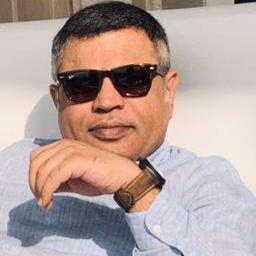 Says Himanshu Sabharwal, the Creative Director at Tricolor India: “The main objective of the holographic 3D projection project was to preserve and propagate the rich cultural and historical heritage of the place and transform it into a potential tourism spot.”
Says Himanshu Sabharwal, the Creative Director at Tricolor India: “The main objective of the holographic 3D projection project was to preserve and propagate the rich cultural and historical heritage of the place and transform it into a potential tourism spot.”
The Gurgaon-based projection mapping specialist landed the project following a rigorous screening and evaluation by the GSCL, and its structural consultant Tata Consulting Engineers(TCE).
Apparently, GSCL who led the initiative, envisaged to create a programme that encapsulates all that that characterizes the region- heritage and culture, spiritual, social, political activism, contribution to India’s one nation identity et al.
Having taken the brief, Himanshu decided to create a Narrator Brahmaputra, (world’s third largest river, with its major stretch running in Assam) to do the captivating story-telling from its earliest antiquity to the present, connecting through the centuries of sustenance and survival, struggles and sacrifices, leading roles and legacies, and tenets and transformation.
With a view to achieving the intended content depth and direction, Himanshu set up a multi-disciplinary teams and initiated some deep research towards evolving the show material.
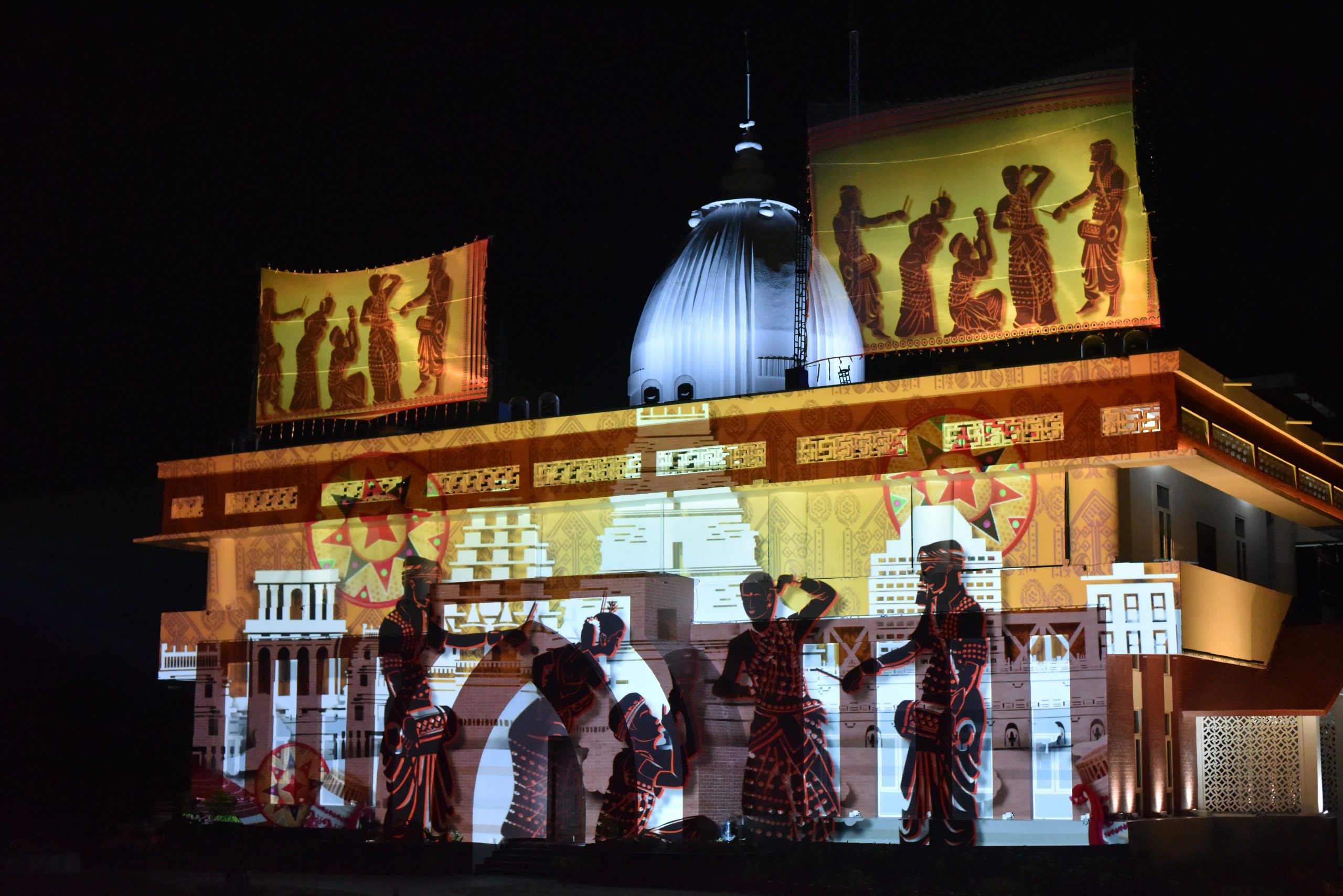
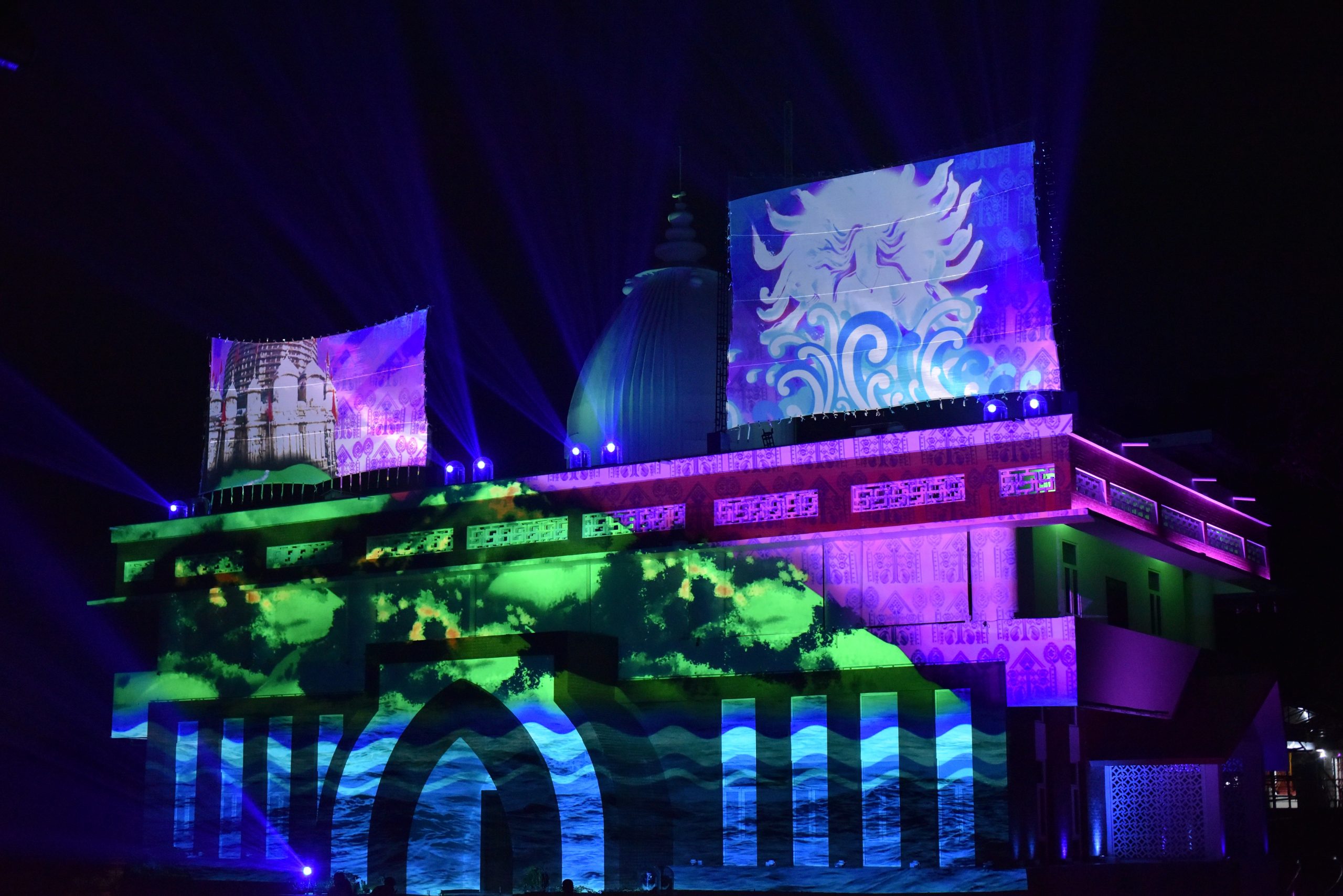 “Brahmaputra knows Assam better than anyone else,” says the Tricolor Creative Director. “It’s been witness to all that the State had been through- the demonish rule of Narakasura, the identity marking reign of Ahom kingdom founder Syu Ka Pha, the spiritual-cultural reformist life of Shrimant Shankardev, the martyrdom of Lachit Borphukan, Maniram Diwan, and Kanak Lata, and the era of Mahatma Gandhi,” he explains. “The narrator recreates all that glorious past, as well as the painful happenings, and seeks to connect those vibes with the current generation.”
“Brahmaputra knows Assam better than anyone else,” says the Tricolor Creative Director. “It’s been witness to all that the State had been through- the demonish rule of Narakasura, the identity marking reign of Ahom kingdom founder Syu Ka Pha, the spiritual-cultural reformist life of Shrimant Shankardev, the martyrdom of Lachit Borphukan, Maniram Diwan, and Kanak Lata, and the era of Mahatma Gandhi,” he explains. “The narrator recreates all that glorious past, as well as the painful happenings, and seeks to connect those vibes with the current generation.”
The project couldn’t have been named better than The Ray of the East.
Since the project is all about Assam and its identity, Himanshu involved some of the famous personalities coming from the region to strengthen the vibes.
According to him, artists like Kabir Bedi, Kapil Bora, and Zerifa Waheed have lent their voices to the narrator, while Ms. Florence Handique was instrumental in lending her voice and coordinating all script narrations, voiceovers, and translations etc.
Further, highly acclaimed Assamese theatre personality Abinash Sharma has majorly contributed in scripting the story-telling process, besides overseeing all the stages of the show as it progressed.
Despite all that, it wasn’t still enough, as the project needed a few more work-outs.
“When we were required to calculate the projection angles, instead of projecting onto the perpendicular right side of the building, we decided to increase the façade for the purpose of mapping,” explains the Tricolour chief. “For achieving this, the projector placement was done atop the Mandap and two massive supplementary screens were placed. The second was the change in the colour of the complex by the GSCL.”
To accommodate these design changes, the content also had to undergo some iteration in terms of choices of the colour palette.
Team Tricolor did all that- apparently with aplomb.
Still wanting to try further towards making the experience immersive, and at the same time refreshing, Himanshu decided to do something new, inventive.
“We decided to bring on a mesh that can be operated by means of hydraulics,” Himanshu informs.
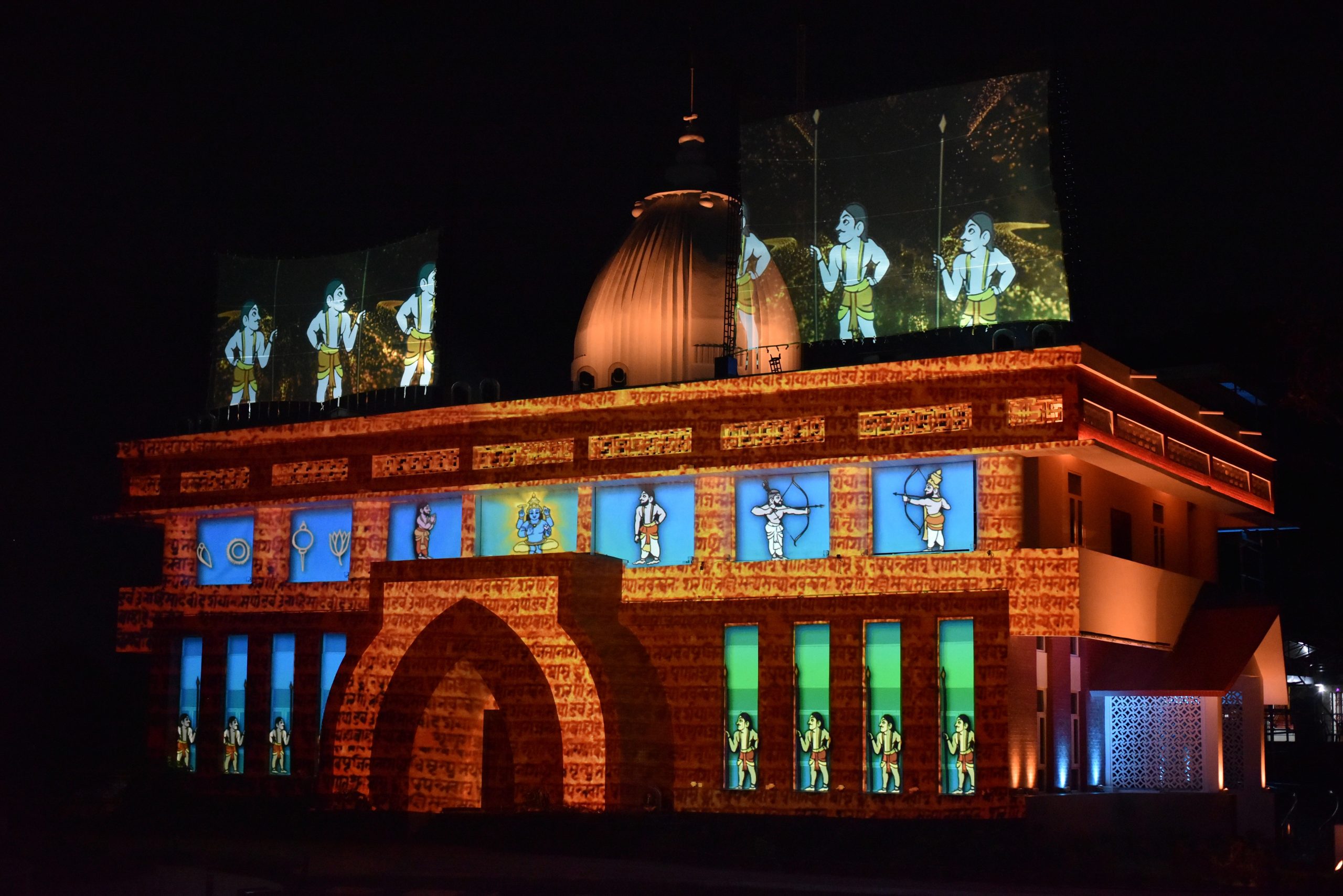
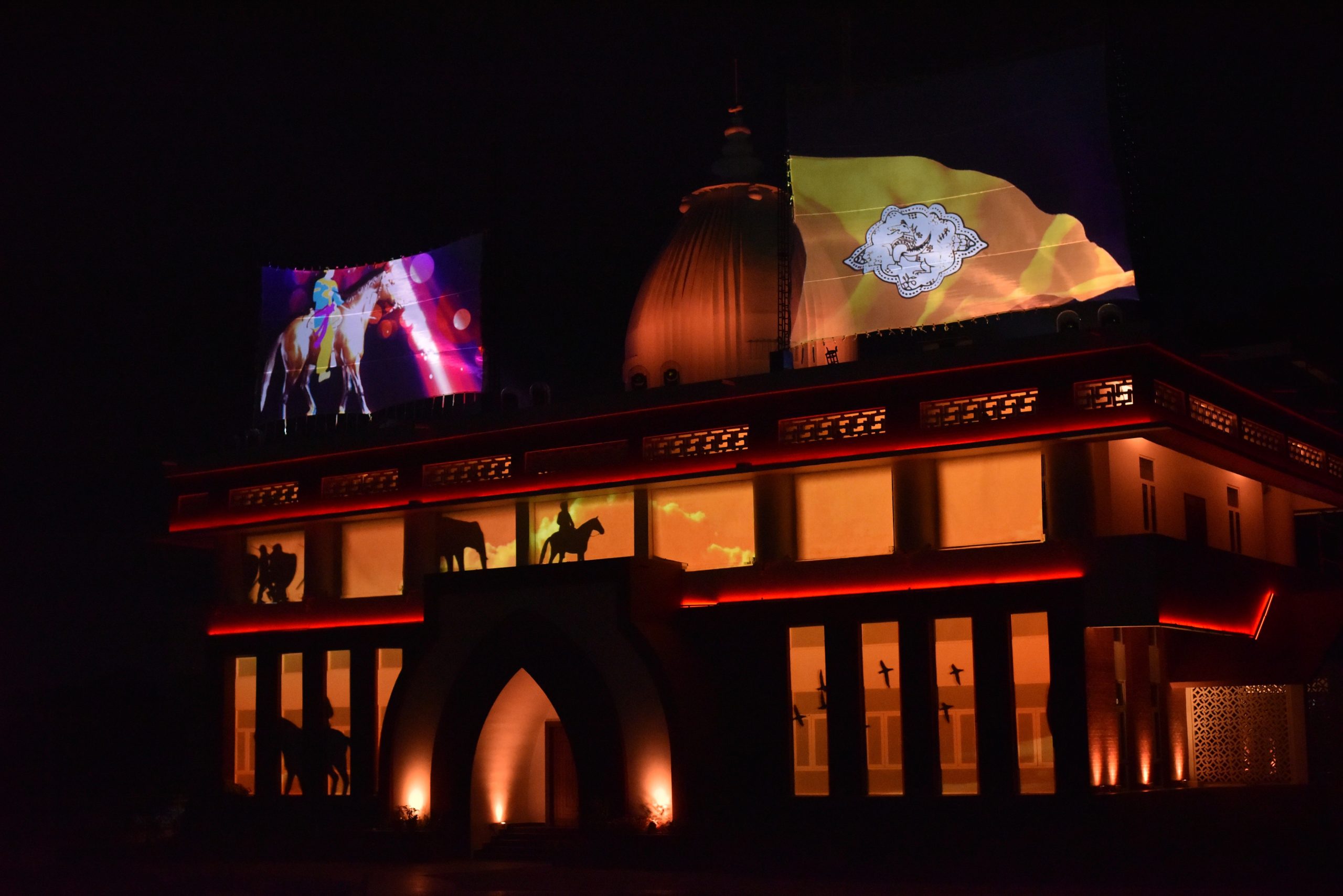 Another important innovation brought in by Team Tricolour was in intelligent lighting. “The lighting of the façade has been done in such a brilliant way that one can’t figure out where the mapping ends and where the lighting starts. It is that seamless,” explains Himanshu.
Another important innovation brought in by Team Tricolour was in intelligent lighting. “The lighting of the façade has been done in such a brilliant way that one can’t figure out where the mapping ends and where the lighting starts. It is that seamless,” explains Himanshu.
For Tricolor India, which has made its name and fame with some of the most prestigious projets to its credits, this project is still unique.
“The job being first such project in the region is certainly one,” Says Himanshu. “Besides blending several elements into the story, long historical and cultural significance of the place all culminating to a very deep sense of patriotism and nationhood feels so unique,” he explains. “It required utmost attention, and skilful adaptation of the region’s tenets for the story telling.”That apart, the hydraulic mesh, and intelligent lighting modes incorporated makes the project technologically unique as well, he remarks.
“The best part of our work is the deep sense of gratitude and honour we have of engaging with such sensitive heritage, and monuments that have seen such long tests of time,” remarks Himanshu. “Where do you get a canvas and a platform like that.”
Obviously, the project install won some big commendations too.
“A technogical marvel that awes the beholder!!!,” the State Cabinet Minister for Housing and Urban Development Ashok Singhal tweeted. “A mesmerizing light & sound show on the history, and culture of Assam…”











